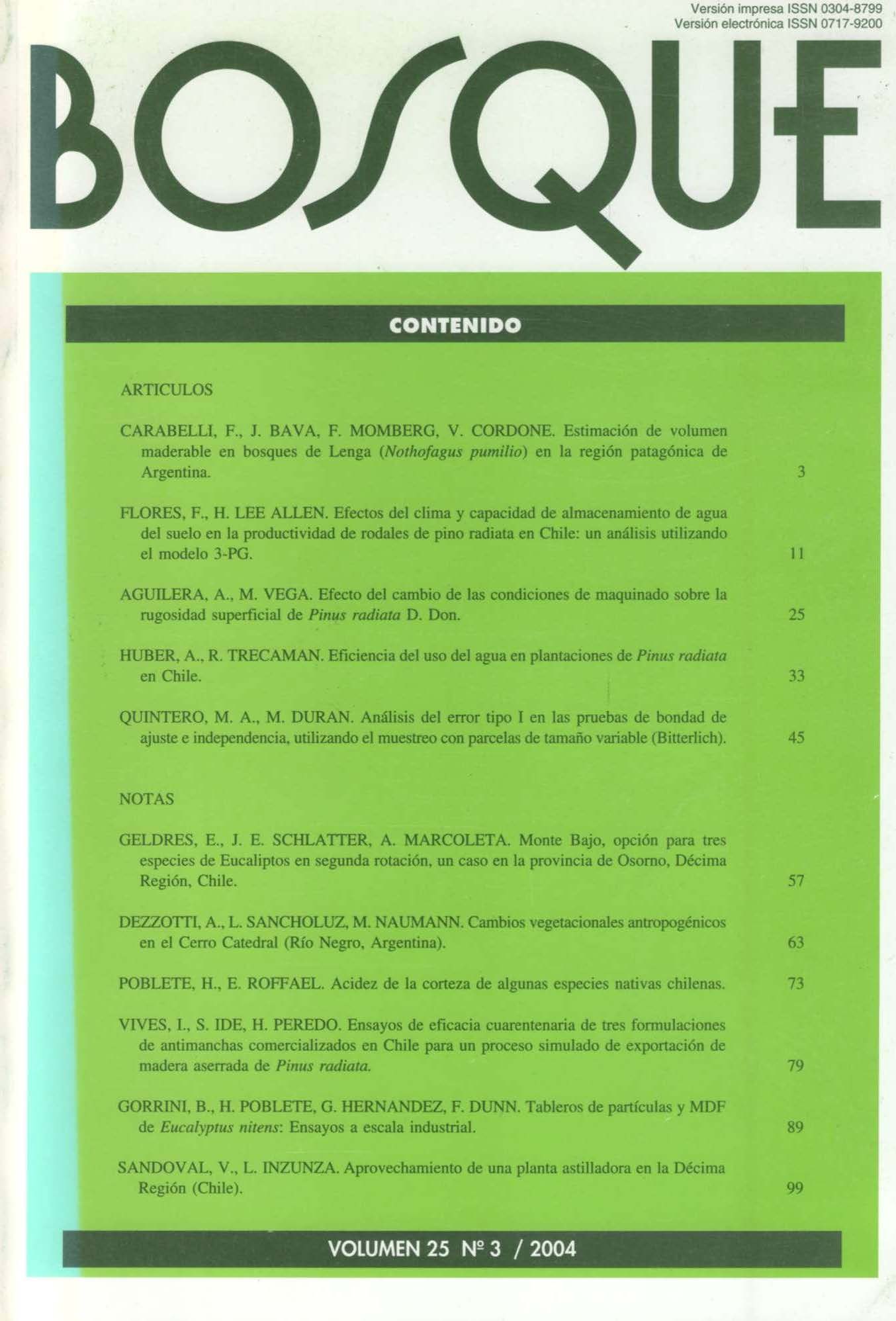Efectos del clima y capacidad de almacenamiento de agua del suelo en la productividad de rodales de pino radiata en Chile: un análisis utilizando el modelo 3-PG
Contenido principal del artículo
Resumen
En Chile, pino radiata (Pinus radiata D. Don) ha sido plantado a lo largo de un amplio rango de suelos y climas, y las plantaciones exhiben amplias variaciones en productividad. Para manejar eficientemente la productividad, es necesario cuantificar la productividad potencial, identificar los principales factores no-manipulables que determinan ese potencial, identificar qué rodales tienen una producción bajo el potencial, determinar qué limitaciones de suelo y/o del rodal son responsables de los niveles de producción del rodal bajo el óptimo, y desarrollar tratamientos silviculturales que mejoran efectivamente las limitaciones que han sido identificadas. Para estimar la productividad potencial, fue utilizado el modelo ecofisiológico 3-PG, generando estimaciones de producción de madera del fuste de rodales de pino radiata de densidad normal, ubicados entre la VI y IX Regiones de Chile. 3-PG, también fue utilizado para explorar los efectos del clima y capacidad de almacenamiento de agua del suelo sobre la productividad potencial. Las estimaciones de productividad potencial de pino radiata con 3-PG variaron entre 14 y 44 m3ha-1año-1. Dentro del área de estudio, la mayor parte de la variación en la productividad potencial se debió a la precipitación. El modelo indicó variaciones considerables en la extensión y magnitud de las limitaciones de agua del suelo.

